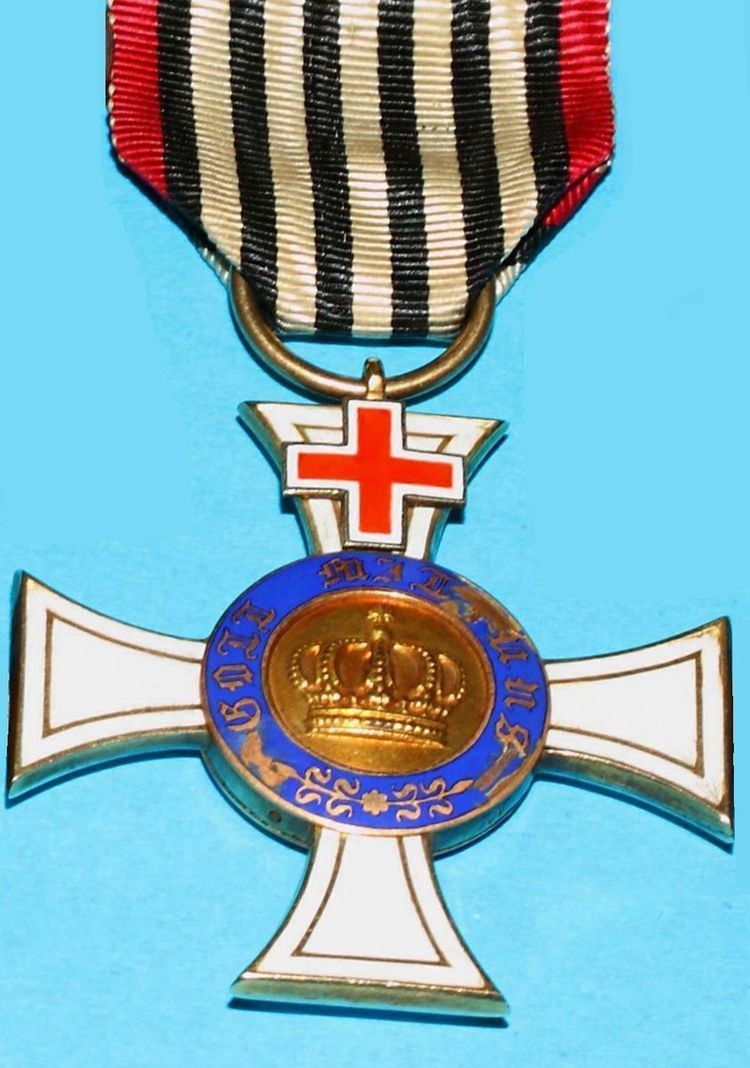 | ||
The Order of the Crown (German: Kronenorden) was a Prussian order of chivalry. Instituted in 1861 as an award equal in rank to the Order of the Red Eagle, it could only be awarded to commissioned officers (or civilians of approximately equivalent status), but there was a medal associated with the order which could be earned by non-commissioned officers and enlisted men.
Contents
Officially the Order of the Red Eagle and the Order of the Crown were equal. Most officials did however prefer to be appointed in the older Order of the Red Eagle. The Order of the Crown was often used as a decoration of someone who had to be rewarded while the Prussian government did not want to award the Order of the Red Eagle.
The Order had six classes:
Insignia
The badge of the Order for the 1st to 4th classes was a gilt cross pattée, with white enamel (except for the 4th Class, which was plain). The obverse gilt central disc bore the crown of Prussia, surrounded by a blue enamel ring bearing the motto of the German Empire Gott Mit Uns (God With Us). The reverse gilt disc has the Prussian royal monogram, surrounded by a blue enamel ring with the date 18 October 1861.
The star of the Order was (for Grand Cross) a gilt eight-pointed star, (for 1st Class) a silver eight-pointed star, or (for 2nd Class) a silver four-pointed star, all with straight rays. The gilt central disc again bore the crown of Prussia, surrounded by a blue enamel ring bearing the motto Gott Mit Uns.
The ribbon of the Order was blue.
The order could be awarded in dozens of variations. For example with superimposed Cross of Geneva (Red Cross - normally given to doctors for meritorious service), with swords and with oak leaves.
List of Knights
The following lists show a fair cross section of individuals who were known to be conferred with the Order in its several classes, in order of precedence. (The following is only a partial list and may expand over time, with further research.)
